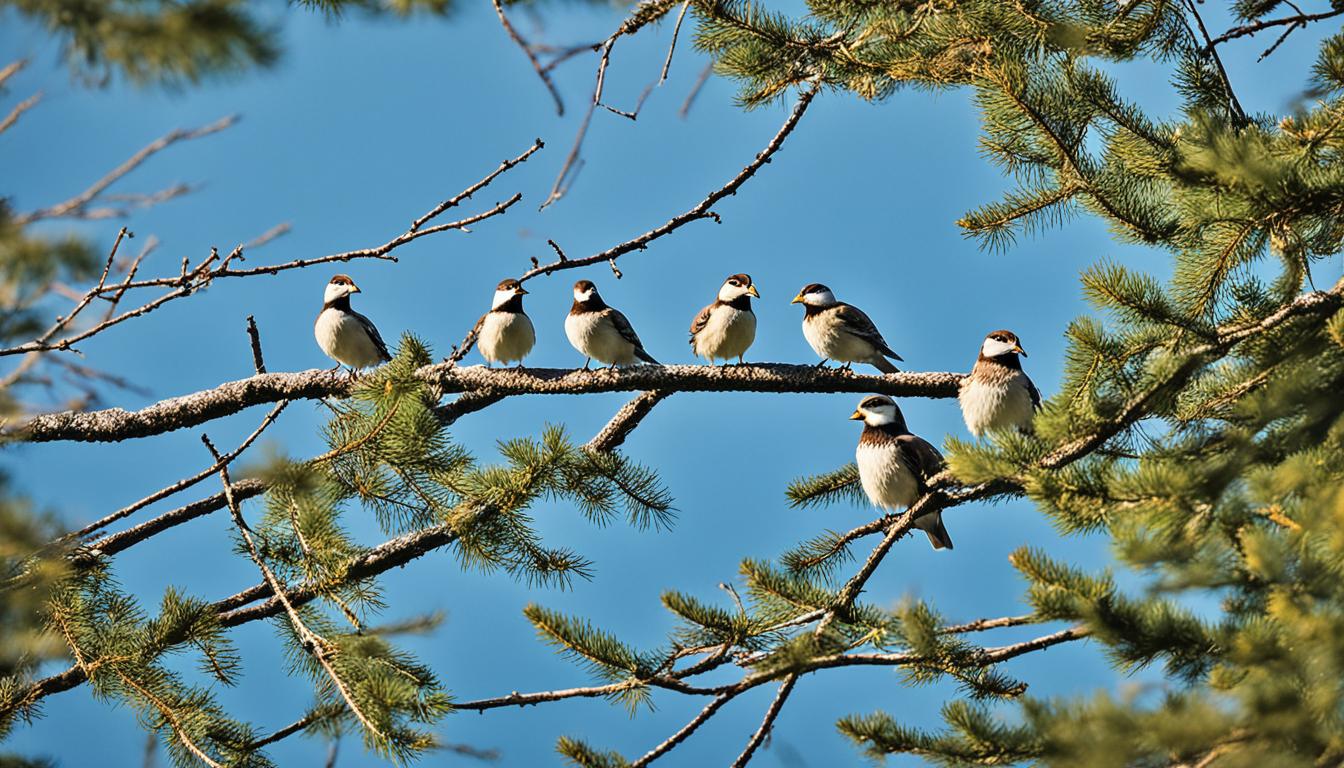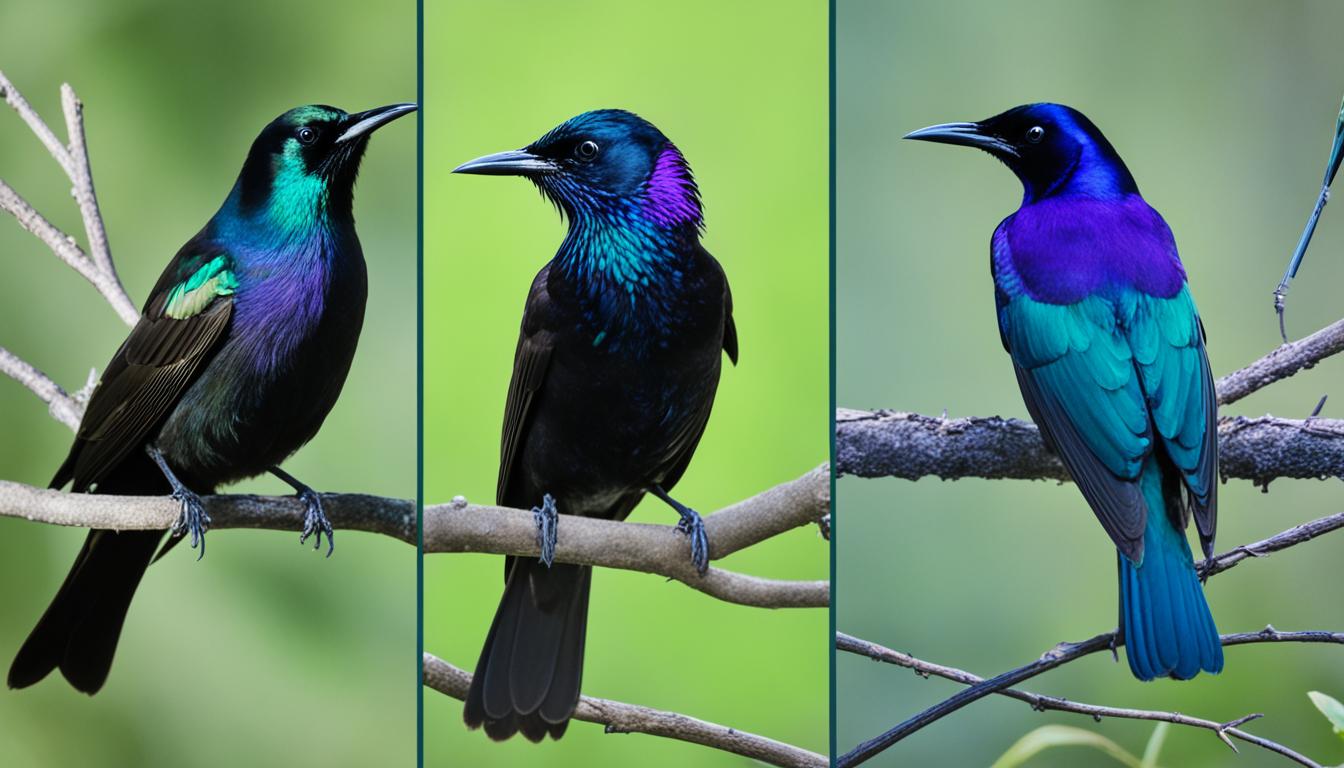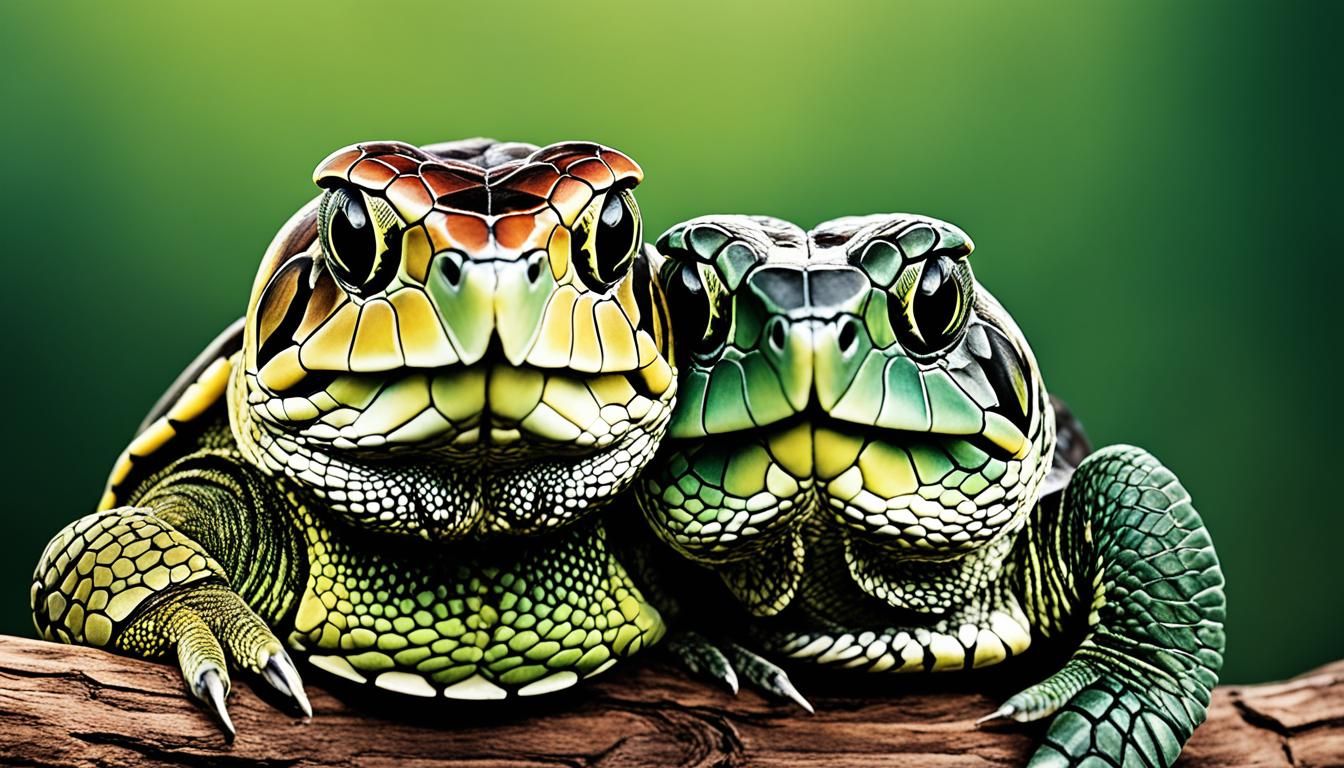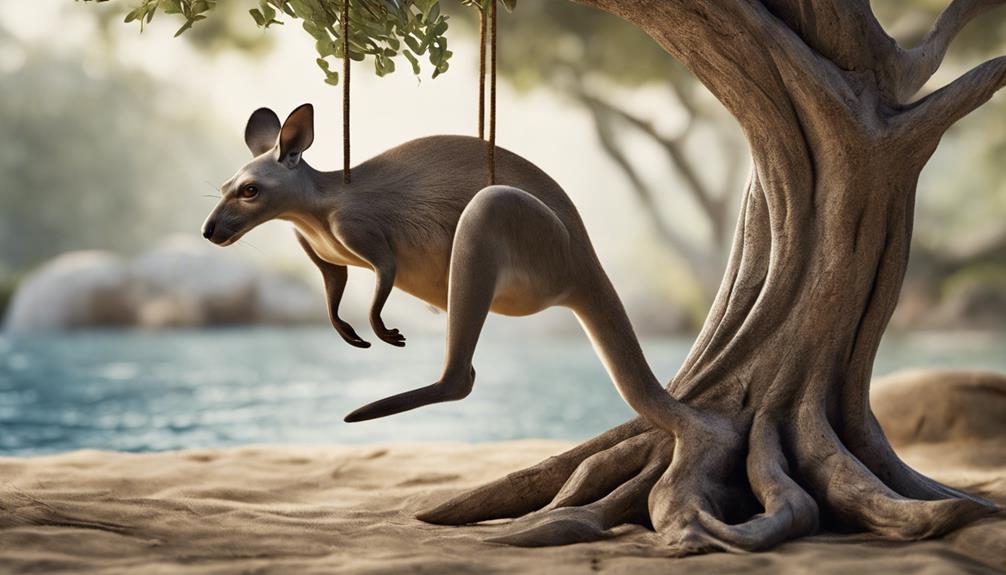Maine is home to a diverse range of bird species, with 67 different species recorded in its forests. The state’s vibrant bird population fascinates nature lovers and birdwatchers, showcasing colorful warblers and elegant cardinals that add vibrancy and beauty to its scenery.
Key Takeaways:
- Maine is home to 67 different bird species.
- The bird population in Maine offers a diverse range of colors, sizes, and habitats.
- From warblers to cardinals, Maine’s birds bring beauty and fascination to the state.
- Birdwatching in Maine is a popular activity for nature enthusiasts.
- By providing the right food and habitat, you can attract these birds to your own backyard.
American Goldfinch
The American Goldfinch is a common visitor to Maine, attracted by thistle, evening primrose, and milkweed. They also enjoy bird feeders, especially when filled with black-oil sunflower seeds. These bright yellow birds add a pop of color to gardens and are a delight to watch.

If you want to attract American Goldfinches to your garden, consider setting up a bird feeder filled with their favorite food – black-oil sunflower seeds. These small and playful birds are known for their acrobatic flights and can bring joy to any backyard.
Here are some tips for attracting American Goldfinches:
- Plant thistle, evening primrose, and milkweed in your garden to provide a natural food source for the goldfinches.
- Offer a variety of bird feeders, including tube feeders and mesh feeders, to accommodate their feeding preferences.
- Fill the feeders with black-oil sunflower seeds, which are a favorite food of the American Goldfinch.
- Place the feeders in an open area, away from shrubs and trees, to ensure visibility and easy access for the birds.
- Keep the feeders clean and regularly filled with fresh seeds to attract goldfinches consistently.
“The American Goldfinch is a delightful bird to have in your garden. Their vibrant yellow plumage and cheerful songs are a true reflection of the beauty of nature.”
With a little effort and the right setup, you can create a welcoming environment for American Goldfinches in your yard. Enjoy the sight of these bright and lively birds as they bring life and color to your garden.
| Key Features of the American Goldfinch | Garden Tips |
|---|---|
| Bright yellow plumage | Plant thistle, evening primrose, and milkweed |
| Visits bird feeders | Offer a variety of feeders filled with black-oil sunflower seeds |
| Acrobatic flight | Place feeders in an open area for easy access |
| Cheerful song | Regularly clean and fill feeders with fresh seeds |
Northern Cardinal
The Northern Cardinal is a year-round resident in Maine, known for its vibrant red plumage. These beautiful birds bring a touch of elegance to any backyard. They can often be seen at bird feeders, where they enjoy a variety of food. Providing the right bird food for cardinals will not only attract them but also ensure their health and well-being.
Best Bird Food for Cardinals
Cardinals have a diverse diet, and offering a mixture of seeds and other foods can help attract them to your yard. Here are some recommended bird foods for cardinals:
| Food | Description |
|---|---|
| Sunflower seeds | Cardinals love sunflower seeds, both in-shell and hulled. They are a great source of protein and fat, which provide energy for these active birds. |
| Cracked corn | Cracked corn is another favorite food of cardinals. It is a good source of carbohydrates and can be offered on its own or mixed with other seeds. |
| Millet | Millet is a small, round seed that cardinals enjoy. It is high in carbohydrates and easy for them to eat. |
| Peanuts | Cardinals also relish peanuts, whether they are whole or shelled. Peanuts are rich in fats and can be a valuable food source, especially during colder months. |
By providing a variety of bird food for cardinals, you can attract these stunning birds to your backyard and enjoy their presence year-round.
“Cardinals are truly a sight to behold with their vibrant red plumage. By offering a mix of sunflower seeds, cracked corn, millet, and peanuts, you can create an inviting space for these elegant birds to visit.” – Our Birdwatching Experts
Remember to keep your bird feeders clean and filled regularly to ensure a steady supply of food for cardinals in Maine.
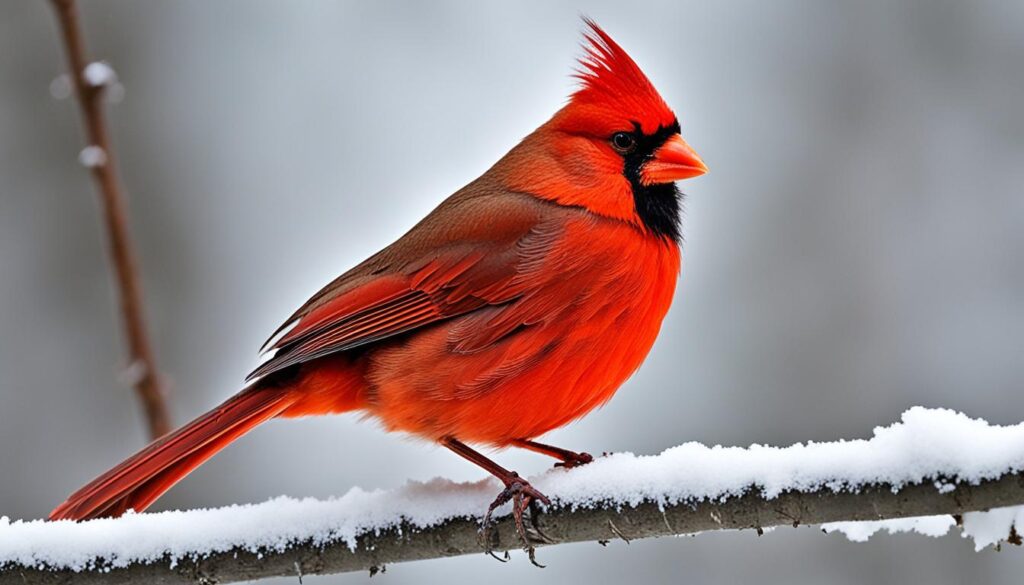
Tufted Titmouse
The Tufted Titmouse is a delightful and frequent visitor to bird feeders in Maine. These small and lively birds bring a unique energy to any garden with their distinctive crest and dark eyes. If you want to attract these charming birds to your backyard, providing the right food and habitat is key.
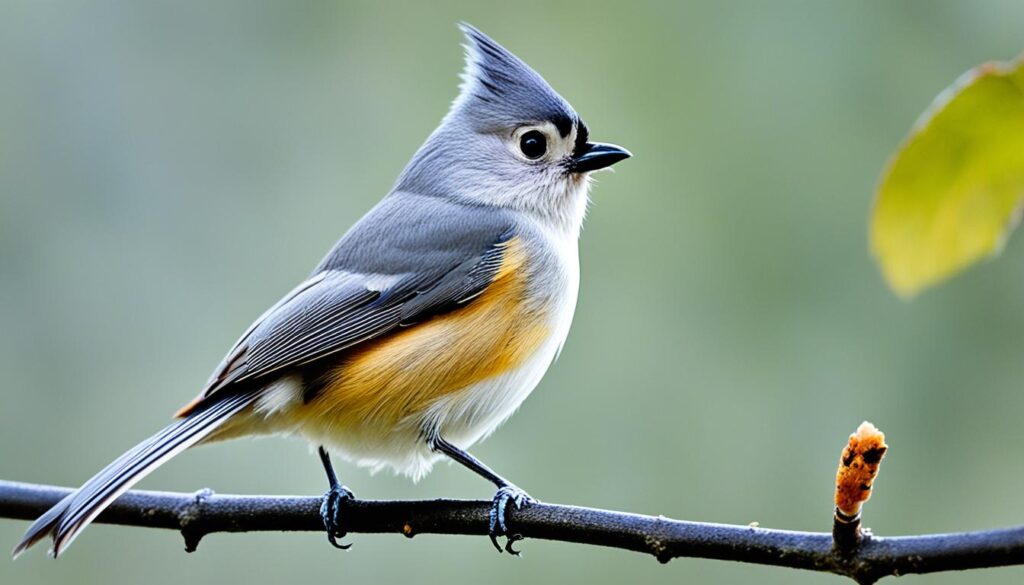
Favorite Food: Sunflower Seeds and Peanuts
The Tufted Titmouse loves to nibble on sunflower seeds and peanuts. By offering these tasty treats at your bird feeders, you’ll have a better chance of attracting these lively birds to your outdoor space. They are known for their agility in perching, making it a joy to watch them as they enjoy their meal.
Creating a Welcoming Habitat
Aside from providing bird feeders, creating a welcoming habitat is important to attract the Tufted Titmouse. They are cavity nesters, so having trees or shrubs with natural cavities or birdhouses in your garden can entice them to stay and build their nests. The dense foliage of evergreen trees also provides excellent cover for these birds.
“The Tufted Titmouse is a curious and social bird. By offering sunflower seeds and providing a safe haven with birdhouses and suitable nesting sites, you can turn your backyard into a hub of activity and observe these charming birds up close.” – Birdwatching Enthusiast
Invite the Tufted Titmouse to your garden and enjoy their playful presence. With their lively nature and unique appearance, they will surely bring joy and entertainment to your outdoor space.
| Characteristics | Details |
|---|---|
| Scientific Name | Baeolophus bicolor |
| Size | About 6 inches (15 cm) in length |
| Color | Gray upperparts, white underparts, and a distinct tufted crest |
| Habitat | Woodlands, forest edges, and suburban areas with trees and shrubs |
| Behavior | Social and curious, often seen in small flocks exploring their surroundings |
Black-capped Chickadee
The Black-capped Chickadee, Maine’s state bird, is a familiar and beloved sight in the state. With their distinctive call of “chick-a-dee-dee-dee,” these small birds bring joy to birdwatchers of all ages.
If you want to attract these playful and curious birds to your backyard, consider setting up nesting boxes filled with sawdust or wood shavings. Black-capped Chickadees are known to nest in cavities, making nesting boxes an ideal home for them.
Here’s a table outlining some key characteristics of the Black-capped Chickadee:
| Species | Black-capped Chickadee |
|---|---|
| Scientific Name | Poecile atricapillus |
| Size | 4.7 – 5.9 inches |
| Weight | 0.4 – 0.6 ounces |
| Habitat | Woodlands, forests, and suburban areas |
| Diet | Insects, seeds, berries, and suet |
| Conservation Status | Least Concern |
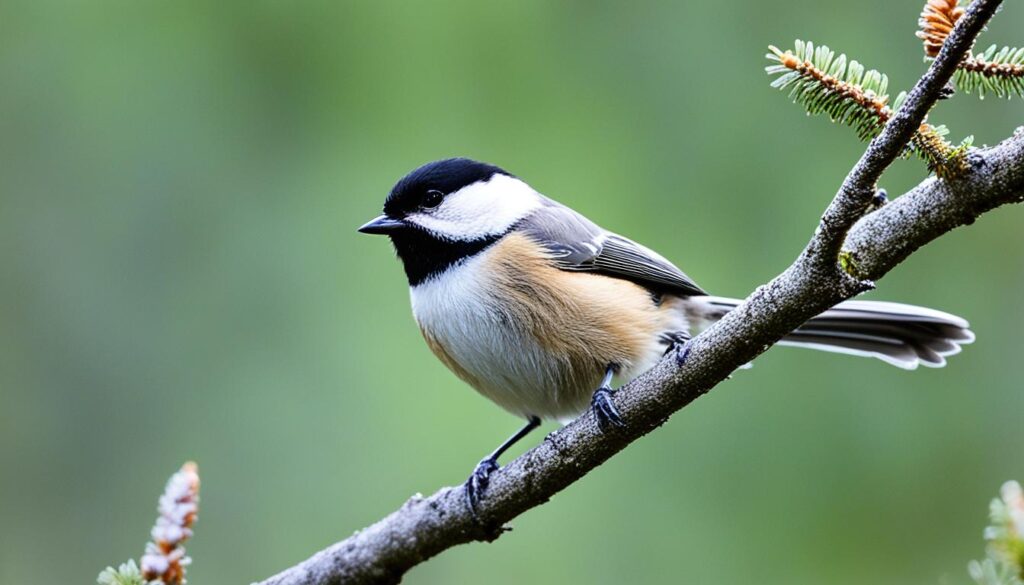
These charismatic birds are not only the state bird of Maine but also a symbol of the state’s resilient and lively spirit. They bring a sense of wonder and excitement to any birdwatching experience in Maine.
If you’re lucky enough to have Black-capped Chickadees visit your yard, make sure to provide them with a welcoming environment by maintaining nesting boxes and offering a variety of their favorite foods.
House Finch
House Finches are social birds that love to visit bird feeders. Once they discover a food source, they will bring their friends along. These cheerful birds can be attracted with sunflower seeds, and they add a splash of color with their red heads and streaked bodies.
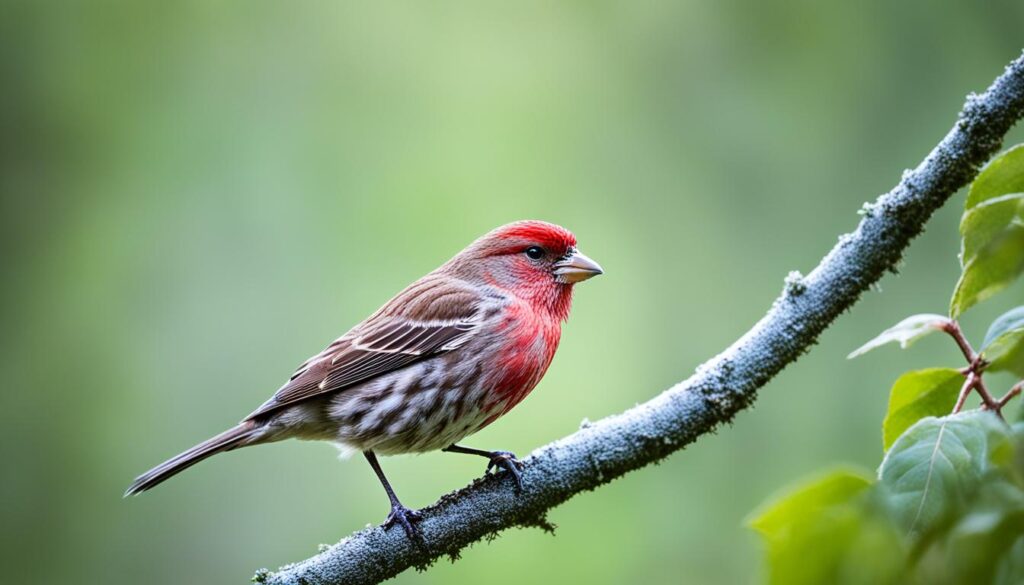
Attracting finches to your yard can be a rewarding experience. Not only will you have the opportunity to observe these charming birds up close, but you will also be supporting their well-being by providing a reliable food source.
If you’re interested in attracting House Finches, here are a few tips:
- Place multiple bird feeders in your yard to accommodate a larger flock.
- Offer a variety of seeds, such as sunflower seeds, to cater to their preferences.
- Ensure that the bird feeders are clean and well-maintained.
- Consider planting native plants and shrubs that produce seeds, berries, or fruits that House Finches can forage on.
With these simple steps, you can create an inviting space for House Finches and enjoy their delightful presence in your backyard.
White-breasted Nuthatch
The White-breasted Nuthatch is a sparrow-sized bird known for its acrobatic feeding habits and charming appearance. These beautiful birds have a black cap and a white face that contrasts with their blue-gray wings and back. One distinguishing feature is their ability to walk headfirst down tree trunks while foraging for food.
White-breasted Nuthatches are frequent visitors to bird feeders, where they display their agile and entertaining behavior. They have a unique feeding technique: they snatch a sunflower seed or two and then carefully tuck them into the crevices of tree bark for later consumption. This behavior allows them to create a food storage system, ensuring they have sustenance during harsh winters when resources are scarce.
To attract White-breasted Nuthatches to your yard, consider planting native fruiting shrubs like juniper and winterberry. These shrubs provide a natural food source that entices these birds to visit and explore your garden. Native fruiting shrubs not only benefit White-breasted Nuthatches but also support the overall health and biodiversity of the local ecosystem.
| Nesting Habits | Feeding Preferences | Migratory Behavior |
|---|---|---|
| They nest in natural cavities found in decaying trees and occasionally utilize nest boxes. | They primarily feed on insects, seeds, and nuts. | While some White-breasted Nuthatches are year-round residents, others migrate short distances to find suitable food sources. |
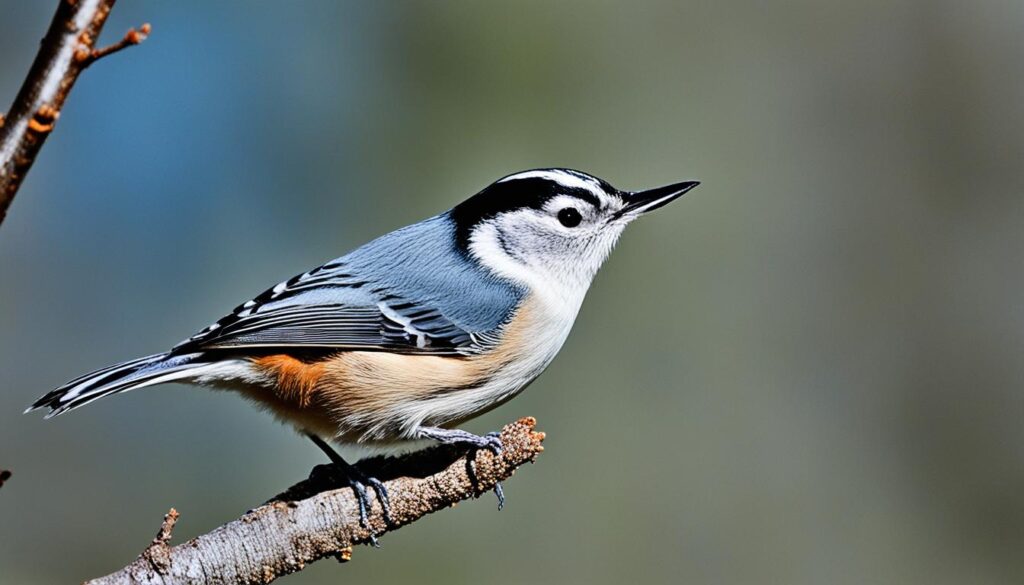
Observing the acrobatic antics of White-breasted Nuthatches in your yard is a delightful experience. These agile and resourceful birds bring life and charm to any outdoor space. By providing the right environment and food sources, you can attract White-breasted Nuthatches and enjoy their delightful presence in your garden.
Indigo Bunting
The Indigo Bunting is a colorful and beneficial addition to any garden. Not only do these birds bring beauty and charm with their stunning blue appearance, but they also help control pests and weeds, making them a gardener’s best friend.
The Indigo Bunting is often mistaken for being blue, but in reality, their feathers are black. However, the diffraction of light gives them a mesmerizing blue hue that is truly eye-catching. Their vibrant color adds vibrancy and joy to any garden landscape.
These garden birds play a vital role in pest control as they have a diet that includes insects and weed seeds. From caterpillars to grasshoppers, the Indigo Bunting enjoys a wide range of snacks that can help keep unwanted pests in check. Additionally, they have a particular fondness for munching on weed seeds, which can reduce the spread of unwanted plants in your garden.
Having Indigo Buntings in your garden not only adds to its visual appeal but also provides a natural form of pest control that is environmentally friendly. By attracting and providing a suitable habitat for these beautiful birds, you can create a harmonious and balanced ecosystem in your own backyard.
Benefits of Indigo Buntings in Your Garden:
- Efficient pest control by feeding on insects
- Reduce the spread of weed seeds
- Add color and beauty to your garden
- Create a balanced ecosystem
| Indigo Bunting Facts | Description |
|---|---|
| Scientific Name | Passerina cyanea |
| Average Size | 5.5 inches (14 cm) |
| Habitat | Open woodlands, brushy areas, and gardens with shrubs and trees |
| Range | Eastern and central United States |
| Diet | Insects, seeds, and berries |
| Nesting | Open cup nest constructed in shrubs or trees |
| Conservation Status | Least Concern |
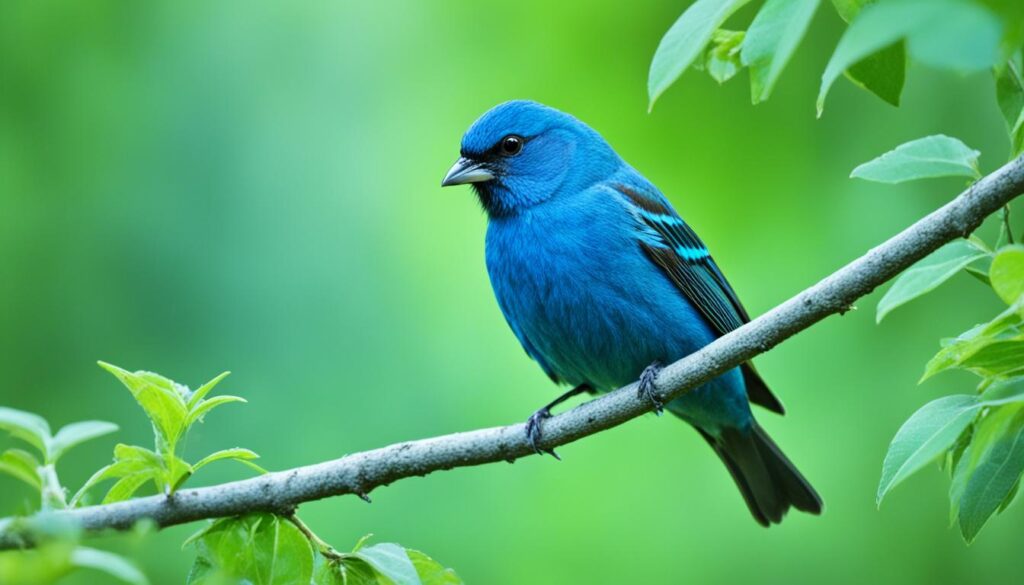
With their pest control capabilities and vibrant blue plumage, Indigo Buntings are a delightful addition to any garden. By creating a welcoming habitat for these garden birds, you can enjoy their beauty while reaping the benefits of natural pest control in your outdoor space.
Wild Turkey
Wild Turkeys are a common sight in Maine, especially during the winter months. These majestic birds visit in search of nuts and berries. Scattering birdseed can attract them to your yard, where you can admire their beauty and watch them as they forage for food.
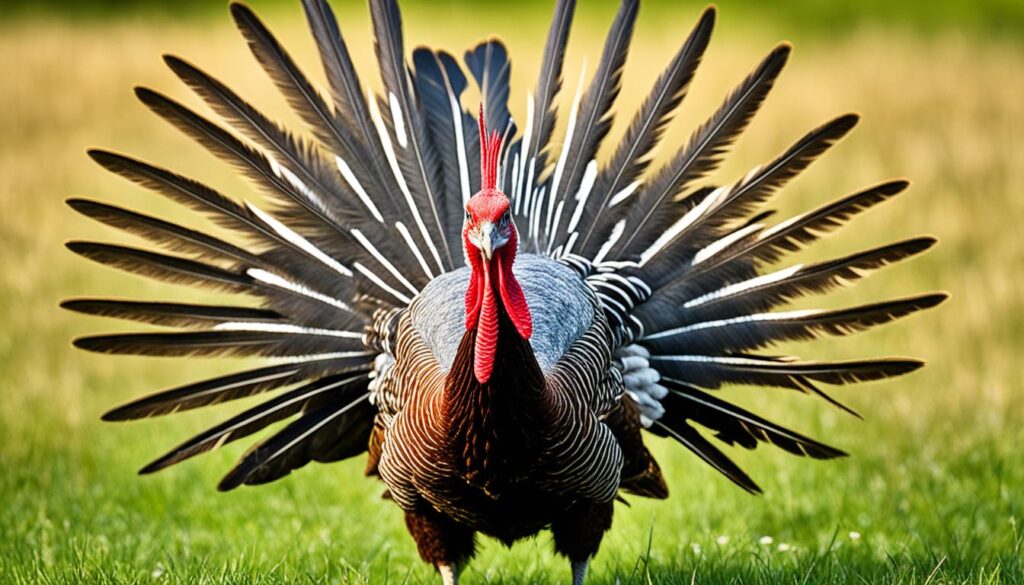
Common Foods for Wild Turkeys
| Food | Description |
|---|---|
| Nuts | Wild turkeys enjoy feasting on acorns, hickory nuts, and beechnuts. |
| Berries | They are particularly fond of blueberries, raspberries, and blackberries. |
| Seeds | Scattering birdseed with a mix of sunflower seeds and millet can attract wild turkeys to your yard. |
| Insects | Wild turkeys also feed on insects like beetles, grasshoppers, and caterpillars, especially during the warmer months. |
Attracting Wild Turkeys to your yard not only provides the opportunity to observe these magnificent birds up close but also contributes to the preservation of their population. Ensure a diverse range of bird food is available to meet their nutritional needs, and enjoy the captivating presence of Wild Turkeys in your outdoor space.
Conclusion
Maine is truly a paradise for birdwatchers. With its diverse landscape and abundant habitats, the state offers a haven for a wide variety of birds. Whether you’re exploring the woodlands, coastal areas, or wetlands, you’ll be captivated by the richness and variety of Maine’s bird population.
By creating an inviting environment with the right food and habitat, you can attract these beautiful feathered friends to your own backyard. Set up bird feeders and provide bird-friendly plants and shrubs to entice birds in Maine to visit and make your garden their home. Enjoy the peaceful moments of birdwatching and the mesmerizing melodies that fill the air.
So come and join us in the wonderful world of birdwatching in Maine. Immerse yourself in the beauty of nature and discover the fascinating bird population that calls this state home. Whether you are a seasoned birder or new to the hobby, Maine’s birds will enchant and inspire you with their colorful plumage, melodious songs, and captivating behaviors.
